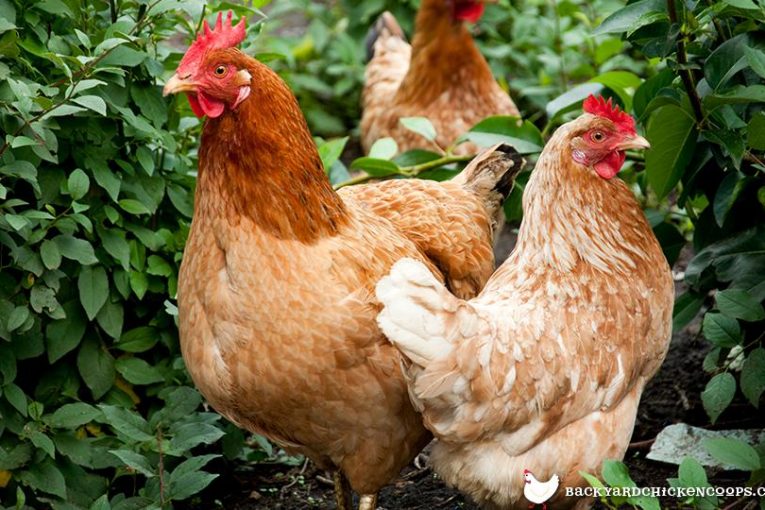

By Nora Lelivelt
DAVIS – On Friday, the Animal Behavior Graduate Group in the College of Biological Sciences at UC Davis hosted a scientific presentation titled “Brown Hens are from Venus, White Hens are from Mars: Strain Differences in the Behavioral Biology of Laying Hens and Implications for Commercial Egg Production” to highlight how behavioral differences in laying hens may have direct implications for commercial egg production.
Tina Widowski, a professor at the University of Guelph, led the hour-long lecture about the research she and her colleagues have done to design aviator systems that will eventually replace the caged housing many egg-producing hens currently live in, which will better accommodate the natural behavior of the chickens.
Beginning the presentation, Widowski asked the attendees, “What color eggs do you like? Do you prefer buying eggs from caged or cage-free environments? And, do you perceive any differences in nutrient content or taste between your preferred egg and the ones you skip in the market?”
Widowski said that often, brown eggs are perceived to be more natural and are preferred in the United States over white eggs. However, many regions of the world have different perceptions and preferences.
The short answer for many differences is that the color of the egg is from the color of the bird, and the taste, quality and nutritional value depends on what the hen eats.
As for the egg production industry, there is a lot of interest in which breed of chicken will be the most productive and cost-efficient.
Widowski explained how evolutionary differences between chicken breeds can account for phenotypical and behavioral differences, but she asked, what does this mean for the egg industry?
Genomic analysis shows chicken domestication to have occurred about 10,000 years ago; however, the present-day chicken, selected specifically for its efficiency in meat or egg production, only began its evolutionary track about 40 to 60 years ago.
Widowski said a typical laying hen is derived from artificial selection. The best traits from about four chicken breeds are combined to create a commercial hybrid that customers recognize as the modern hen. These hens will lay about 320 eggs per year while also being able to expend less energy during the egg-laying process, therefore, requiring less food consumption.
Additionally, this process of selection has occurred for both brown and white hens, with brown hens being derived from Rhode Island Reds and white hens being derived from White Leghorns.
The selection for an efficient egg-laying chicken began around the 1940s and, in the capitalistic style, the development of caged housing followed shortly thereafter. However, when chickens are placed into these small cages, there is a significant decrease in behavioral opportunity.
Widowski said currently, consumers have been demanding chickens to be removed from the caged housing and instead housed in an aviator system that allows chickens to engage in more of their natural behaviors. These aviator systems may include a littered floor for foraging and dust bathing, tiers for perching and roosting and boxes for nesting and egg-laying.
Widowski said each component of these aviator systems has been designed to best adhere to a chicken’s instinctive behavior. For example, the collection of eggs in this complex system really depends on the hen’s urge and motivation for nesting and egg-laying in a dark area.
Yet, one of the most important questions was whether brown hens and white hens behave similarly in the aviator systems.
To analyze this question, Widowski and her colleagues compared the locomotive abilities between brown hens and white hens, as well as the behaviors they exhibit within these aviator systems from chicks to adulthood.
Widowski and her team identified that there are significant differences in the types and frequencies of the locomotive abilities exhibited by each strain of chicken.
White hens performed more wing-assisted jumps, preferred steeper inclines on ramps and spent longer perching on high rungs. Additionally, the time of day that nest occupation occurs varies between brown hens and white hens.
All of these differences mean that the design of the aviator housing system will need variations to better accommodate each strain of chicken. For example, there may be differences in the proportion of food a chicken should be foraging for or provided for in a dish, as well as what the best angle a ramp is to be positioned or the height of perches.
Widowski said, however, these slight differences may have a large impact on egg production. While the design of these aviator housing systems is just beginning to undergo in California, there is a lot of potential for Widowski’s research to directly impact the egg production industry.
For more information on Widowski’s research, visit https://animalbiosciences.uoguelph.ca/abscpeople/twidowsk.
 Nora Lelivelt is a fourth-year Cell Biology major at UC Davis, also minoring in Professional Writing and Biodiversity.
Nora Lelivelt is a fourth-year Cell Biology major at UC Davis, also minoring in Professional Writing and Biodiversity.
Support our work – to become a sustaining at $5 – $10- $25 per month hit the link:
"behavior" - Google News
May 23, 2021 at 06:00PM
https://ift.tt/3fdv5y9
UC Davis' Animal Behavior Graduate Group Presents the Behavioral Biology of Egg-Laying Hens - The People’s Vanguard of Davis
"behavior" - Google News
https://ift.tt/2We9Kdi
Bagikan Berita Ini















0 Response to "UC Davis' Animal Behavior Graduate Group Presents the Behavioral Biology of Egg-Laying Hens - The People’s Vanguard of Davis"
Post a Comment